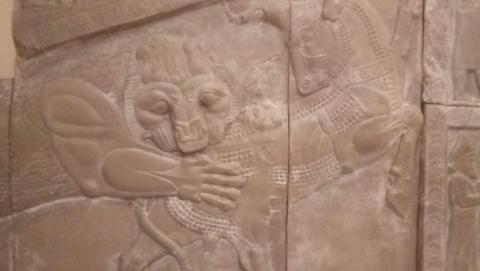Daniel & Zoroaster, Good & Evil

This scene, from the Palace of King Darius at Persepolis, shows a bull and a lion, and is currently displayed at the British Museum. It may represent a contest between the forces of good and evil, with the bull representing the evil spirit Ahriman and the lion the god Ahura Mazda of the Zoroastrian religion, which was observed by the ancient Persian kings.
The theme of good versus evil is usually absent from ancient religion. The old pagans thought the gods imposed order on chaos, but beyond that, they offered little by way of morality or ethical standard. The Persian understanding of moral goodness being at war with evil, and a personal deity associated with each, was a development in theology. Liberal and unbelieving scholars attribute the Hebrew understanding of God and Satan to Zoroastrianism, claiming the Jews 'borrowed' these concepts from their Persian captors. If anything, it was the other way round. Some scholars such as Bruce Lincoln suggest Zoroaster, the Persian prophet, was a contemporary of the prophet Daniel, in whose writings we detect the cosmic skirmishes between good and evil, God and Satan. The difference between the latter and the Persian gods, however, is that Satan is no match for his own Creator, and his doom is writ. They wrestle not as equals, but Master and runaway slave. Why the good God permits Satan to rebel and corrupt has perplexed and exercised theologians for millennia, but of God’s sovereign wisdom and gubernatorial competence, we may rest assured.
“Who is this who darkens counsel
By words without knowledge?
Now prepare yourself like a man;
I will question you, and you shall answer Me.
“Where were you when I laid the foundations of the earth?
Tell Me, if you have understanding.
Who determined its measurements?
Surely you know!
Or who stretched the line upon it?
To what were its foundations fastened?
Or who laid its cornerstone,
When the morning stars sang together,
And all the sons of God shouted for joy? Job 38:2-7, NKJV
- Log in to post comments


 Sunday Worship 10.45am & 6.00pm
Sunday Worship 10.45am & 6.00pm